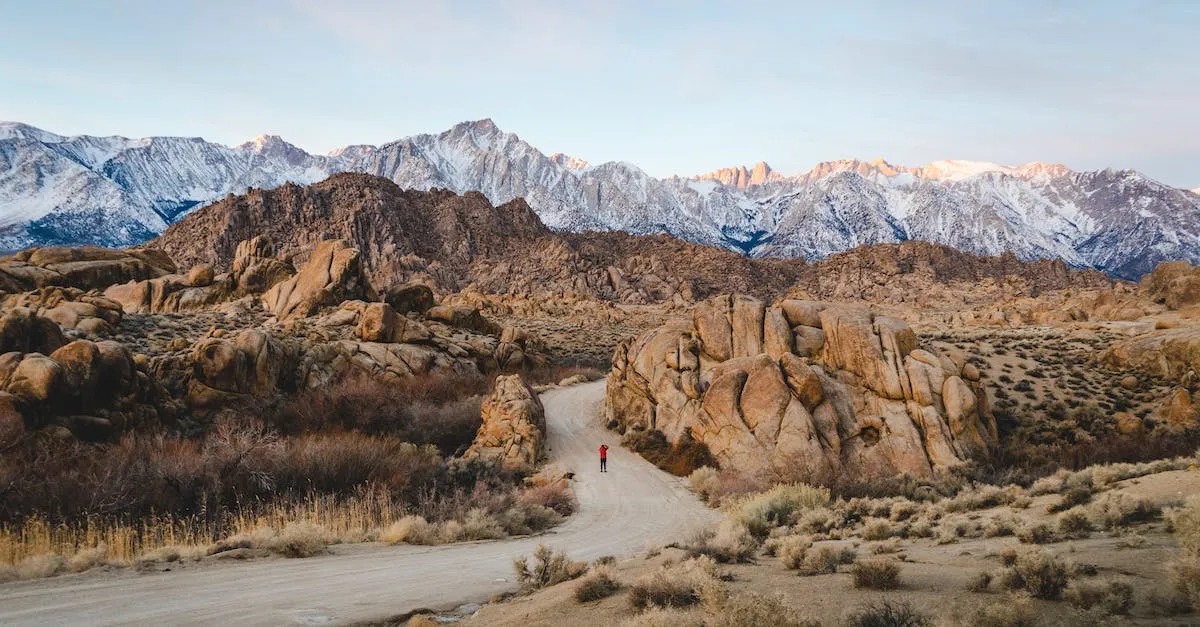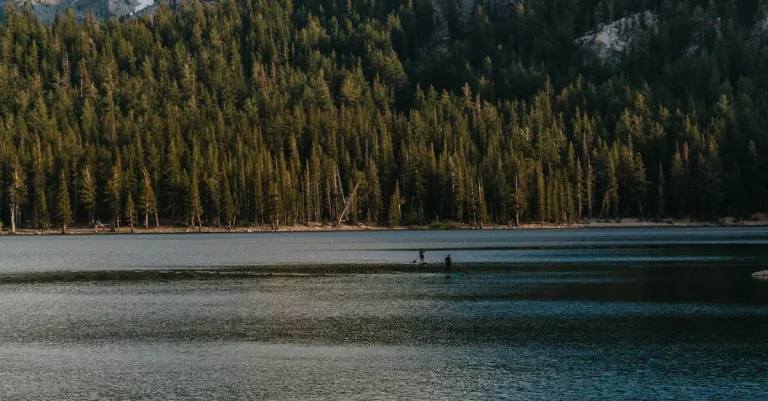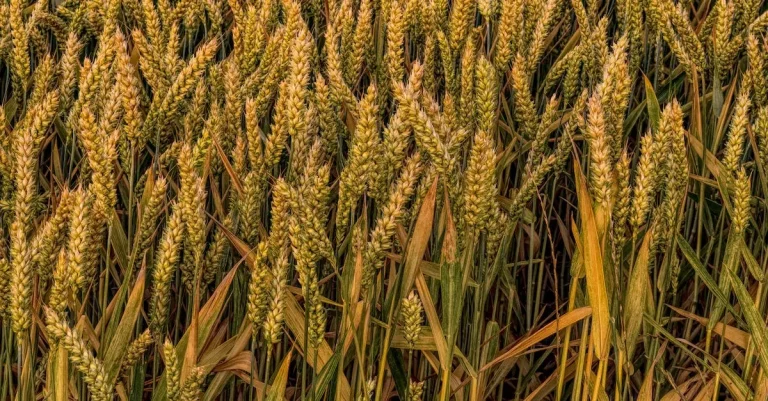Is California A Desert?
With its sunny weather, sandy beaches, and stretches of arid landscape, California may seem like one big desert. But is this perception accurate? If you’re short on time, here’s a quick answer to your question: While parts of California have a desert climate, the state as a whole is geographically diverse and not considered a true desert.
In this comprehensive guide, we’ll examine California’s climate, geography, ecosystems and rainfall to determine how much of the state actually qualifies as desert. We’ll also overview the major desert regions within California and explain why the desert misconception persists.
Defining the Geographic Requirements for a Desert
When considering whether California can be classified as a desert, it is important to understand the specific geographical requirements for an area to be considered a desert. These requirements include low annual precipitation, high temperatures and aridity, and limited vegetation.
Let’s explore each of these factors in detail.
Low Annual Precipitation
One key characteristic of a desert is its low annual precipitation. Deserts are typically defined as areas that receive less than 10 inches (25 centimeters) of rainfall per year. In California, certain regions such as Death Valley and the Mojave Desert receive very little rainfall, with average annual precipitation ranging from only 2 to 4 inches (5 to 10 centimeters) per year.
This scarcity of rainfall contributes to the arid conditions that are typically associated with deserts.
High Temperatures and Aridity
In addition to low rainfall, deserts are known for their high temperatures and arid climate. California experiences a wide range of temperatures, with some desert regions reaching scorching highs during the summer months.
Death Valley, for example, holds the record for the highest temperature ever recorded on Earth, reaching a blistering 134 degrees Fahrenheit (56.7 degrees Celsius) in 1913. The combination of high temperatures and aridity creates a challenging environment for life to thrive.
Limited Vegetation
Another characteristic of deserts is the limited presence of vegetation. Due to the extreme conditions, plants in deserts have evolved to adapt to the scarcity of water and harsh temperatures. California’s desert regions showcase this limited vegetation, with hardy and resilient plants such as cacti and desert shrubs being prevalent.
The arid conditions make it difficult for larger plants and trees to survive, resulting in a landscape dominated by hardy, drought-tolerant vegetation.
California’s Diverse Climate and Geography
When it comes to the climate and geography of California, the state is anything but uniform. From its breathtaking coastline to its towering mountains and expansive valleys, California is a land of incredible diversity.
Let’s explore some of the key features that contribute to the state’s unique climate and geography.
Mediterranean Climate of Coastal Regions
One of the defining characteristics of California’s climate is its Mediterranean climate along the coastal regions. This means mild, wet winters and warm, dry summers. With an average of 300 days of sunshine each year, it’s no wonder that California’s coastal areas are highly sought after by residents and tourists alike.
The cool ocean currents help to moderate temperatures, creating a pleasant and enjoyable climate for outdoor activities and leisure.
Mountain Ranges and Central Valley
As we move inland, we encounter the majestic mountain ranges and the Central Valley that dominate much of California’s geography. The Sierra Nevada mountain range, with its snow-capped peaks, offers not only breathtaking views but also a dramatic shift in climate.
The higher elevations experience colder temperatures and more precipitation, while the lower valleys are marked by hot, dry summers and cool, wet winters.
The Central Valley, a vast expanse of flat land, stretches from the northern to the southern part of the state. Known as the breadbasket of California, this fertile valley is responsible for producing a significant portion of the nation’s fruits, vegetables, and nuts.
The hot summers and cool winters, combined with ample irrigation, create ideal conditions for agriculture.
Rainfall Variations Across the State
When it comes to rainfall, California exhibits significant variations across the state. The western coastal regions receive the majority of their precipitation during the winter months when Pacific storms bring much-needed rain.
In contrast, the eastern parts of the state, particularly the desert regions, experience very little rainfall throughout the year due to the rain shadow effect caused by the Sierra Nevada mountain range.
It is worth noting that despite its reputation for sunshine, California also has areas that can be classified as true deserts. Death Valley, located in the southeastern part of the state, holds the record for the highest temperature ever recorded on Earth.
With its scorching heat and arid conditions, it is a stark reminder of the extreme diversity found within California’s climate and geography.
True Desert Regions Within California
When you think of California, images of sunny beaches and lush green landscapes may come to mind. However, California is also home to several true desert regions. These desert areas are characterized by their arid climate, sparse vegetation, and unique geological formations.
Mojave Desert
One of the most well-known desert regions in California is the Mojave Desert. Located in the southern part of the state, the Mojave Desert covers a vast area of approximately 47,877 square miles. Its unique landscape is dominated by vast stretches of sand dunes, Joshua trees, and rugged mountain ranges.
The Mojave Desert is known for its extreme temperatures, with scorching hot summers and chilly winters.
The Mojave Desert is also home to several iconic landmarks, including Death Valley National Park, Joshua Tree National Park, and the famous Mojave National Preserve. These protected areas offer visitors the opportunity to explore the desert’s diverse ecosystem, enjoy outdoor recreational activities, and marvel at its stunning natural beauty.
Colorado Desert
The Colorado Desert, also known as the Low Desert, is located in the southeastern part of California. It covers an area of approximately 7,000 square miles and is characterized by its lower elevation compared to other desert regions in the state.
The Colorado Desert is known for its hot summers and mild winters.
This desert region is home to the Anza-Borrego Desert State Park, which is the largest state park in California. The park is famous for its colorful wildflower blooms in the spring, as well as its unique geological formations, such as the Badlands and the Palm Canyon.
Great Basin Desert
While most of the Great Basin Desert is located outside of California, a small portion extends into the eastern part of the state. The Great Basin Desert is characterized by its high elevation and cold winters.
It is known for its vast expanses of sagebrush, as well as its unique geological features, such as the Great Salt Lake and the Bonneville Salt Flats.
Visitors to the Great Basin Desert can explore Great Basin National Park, which offers opportunities for hiking, camping, and stargazing. The park is home to Wheeler Peak, the second-highest peak in Nevada, and Lehman Caves, a stunning underground limestone cave system.
Origin of California’s Desert Reputation
California, often associated with beautiful beaches and lush landscapes, also has a reputation for being a desert. This perception has its roots in various factors, including pop culture portrayals, tourism focused on desert destinations, and urban development in arid areas.
Pop Culture Portrayals
California’s desert reputation can be attributed, in part, to how it has been depicted in pop culture. Movies, TV shows, and books often showcase the arid landscapes of the state’s deserts, creating a lasting impression in the minds of viewers and readers.
Classic Western films, such as “The Good, the Bad, and the Ugly,” have captured the rugged beauty of California’s desert regions, contributing to the perception of the state as a desert.
Tourism Focused on Desert Destinations
Another factor influencing California’s desert reputation is the tourism industry’s focus on promoting desert destinations. The state offers a wide range of attractions in its desert regions, including national parks like Joshua Tree and Death Valley.
These destinations attract visitors from around the world who come to experience the unique desert landscapes, wildlife, and outdoor recreational activities. The popularity of these desert destinations further reinforces the perception of California as a desert state.
Urban Development in Arid Areas
Urban development in arid areas of California has also contributed to the state’s desert reputation. Cities such as Palm Springs and Rancho Mirage have flourished in the desert regions, becoming popular destinations for retirees, vacationers, and second-home owners.
The development of golf courses, resorts, and upscale residential communities in these arid areas has led to the association of California with desert living.
It is important to note, however, that California is not entirely a desert state. While it does have significant desert regions, it also boasts diverse landscapes, including coastal areas, forests, and mountains.
The state’s climate varies greatly, with some areas experiencing Mediterranean weather while others have a desert climate.
Future Expansion of Arid Landscape
California, famously known for its diverse landscapes and stunning coastline, is facing a growing concern regarding the future expansion of arid landscapes. With climate change impacting the state’s weather patterns, water resource challenges, and the risk of desertification, it is essential to understand the potential consequences and take necessary measures to mitigate them.
Climate Change Impacts
The effects of climate change are becoming increasingly evident in California. Rising temperatures, prolonged droughts, and reduced snowpack in the Sierra Nevada mountains have all contributed to the drying of the landscape.
According to a report by the California Department of Water Resources, the state has experienced a 29% reduction in annual average snowpack over the past century. This reduction in snowpack has significant implications for water availability and contributes to the expansion of arid areas.
Furthermore, climate models predict that California’s temperature will continue to rise, exacerbating drought conditions and increasing the risk of wildfires. These changes in climate patterns could further transform the state’s landscape, leading to larger areas classified as desert.
Water Resource Challenges
Water scarcity is a pressing issue in California, and the availability of water resources plays a crucial role in determining the expansion of arid landscapes. The state heavily relies on snowpack in the Sierra Nevada mountains to meet its water needs.
However, as mentioned earlier, the reduction in snowpack due to climate change has led to a decrease in water supply.
Additionally, population growth and agricultural demands put further strain on water resources. The California State Water Project, which provides water to millions of residents and irrigates millions of acres of farmland, faces challenges in meeting the increasing demand.
As a result, water scarcity can contribute to the transformation of previously fertile areas into arid landscapes.
Desertification Risks
Desertification, the process by which fertile land turns into desert, poses a significant risk to California’s landscape. It occurs due to a combination of factors, including climate change, unsustainable land management practices, and human activities such as deforestation and overgrazing.
According to the United Nations Convention to Combat Desertification (UNCCD), approximately 75% of California’s land is already considered to be at risk of desertification. The expansion of arid landscapes can have severe consequences for biodiversity, agriculture, and the overall ecosystem.
It can lead to the loss of habitats for wildlife, reduced agricultural productivity, and increased soil erosion.
Addressing the risks of desertification requires a combination of sustainable land management practices, conservation efforts, and policies aimed at mitigating climate change. Protecting and restoring ecosystems, implementing water conservation measures, and promoting sustainable agriculture are crucial steps towards preventing the further expansion of arid landscapes in California.
Conclusion
While California contains significant desert areas like Death Valley and the Mojave, the state as a whole does not actually meet the technical criteria for a true desert. Its Mediterranean climate regions, mountainous topography, and areas of moderate rainfall contrast with the common perception of California as one big sandy desert.
However, ongoing climate change and water scarcity issues may expand arid conditions in parts of California in the future. So while not yet a complete desert, California faces desertification risks that could alter its diverse landscape.








